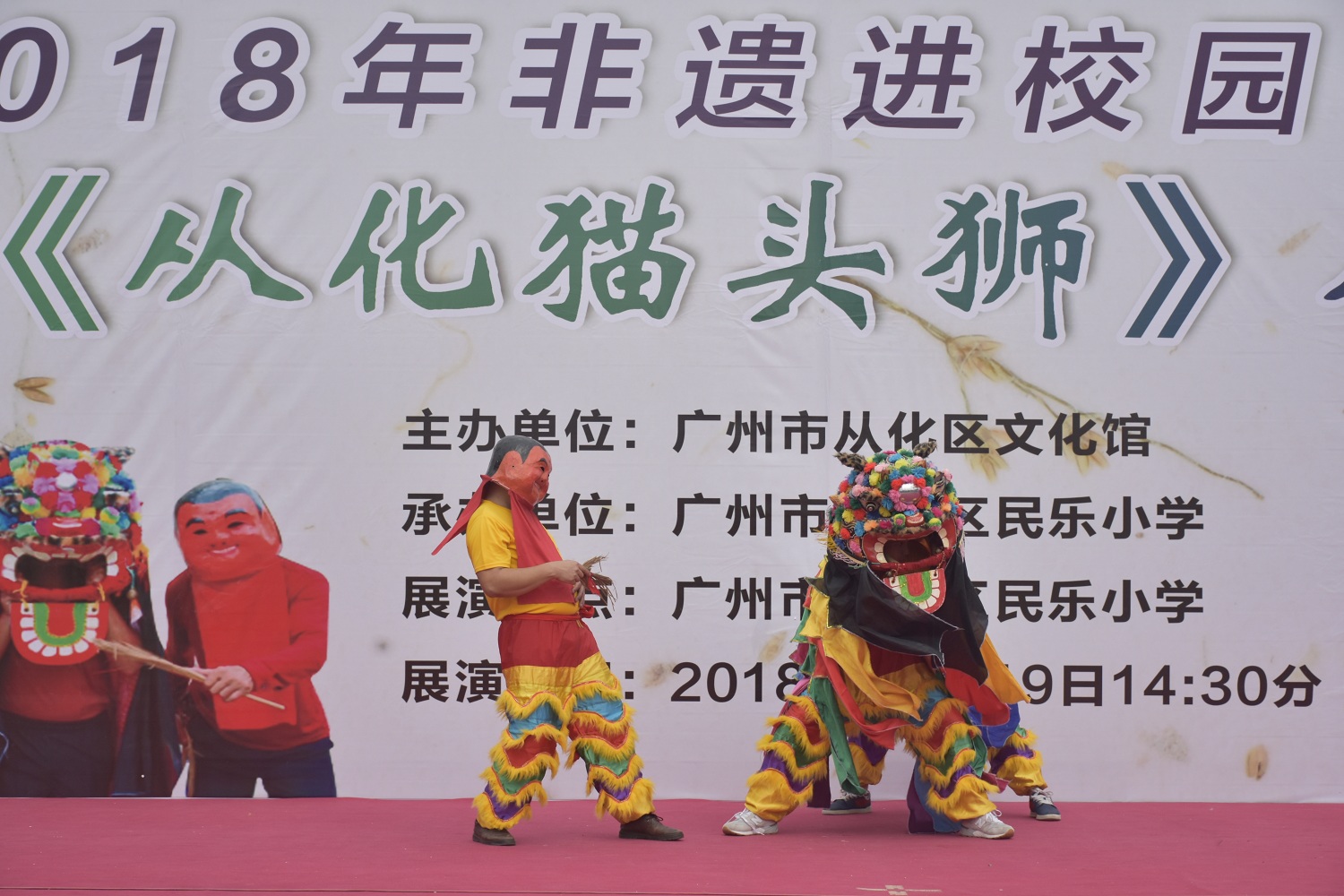Conghua Cat-headed Lion Dance

The Cat-headed Lion Dance of the Hakka is a folk dance that has been passed on from ancient times. This dance is popular among the Hakka, and is also known as the Hakka Lion Dance. It is a traditional dance unique to Conghua, and parallels local lion dances widely popular in the Pearl River Delta. At religious ceremonies and New-Year and birthday celebrations, local people practice this dance wearing special lion costumes, accompanied by gongs, drums and suona.
Traced back to more than 300 years ago, the dance was first documented in the New-Year Folk Customs section in the Counghua County Annals (Fifth Volume of the First Year under the Reign of Emperor Xuantong of the Qing Dynasty): "The day before Beginning of Spring, officials welcome oxen at the eastern suburb, and the city is decorated with dramas and lions." In the Xinwei Village, Beixing Village of Chengjiao Street, and Fengyi Village of Jiangpu Street where the Hakka live, the cat-headed lion dance is a shared folk custom. On the first and second days of the New Year local troupes will dance at the village entrances to bring about good luck in the coming year.
This cat-headed lion dance distinguishes itself from other dances by the head design, dance moves, and drum melody. Compared to local lion designs, this one is smaller in size, and has two bunches of green wheat placed on the head. Dancers dance along to the drum beats, sometimes jumping upward and forward progressively, sometimes slowing down to pace back and forth. In terms of drum style and dance moves, the cat-headed lion dance is drastically different from northern lion dances and other local ones. It is also noticeable that dancers wear cotton costumes in floral patterns with red/black rims, a special local design of the Hakka.
A lion dance troupe typically consists of 24 members, six members each in four units. To complete one dance that can be up to 1 hour in duration, these units take turns performing. Following fast-paced drum beats, the troupe sings and dances to pray for a great harvest, safety and good fortune. Passed down through generations, this dance has seen choreography developments over time. These days, with four sets of moves, the performance has been streamlined to approximately 15 minutes from 1.5 hours. Using innovative props and colorful costumes, the dance is now much better fitted to a vibrant modern rural life style.
